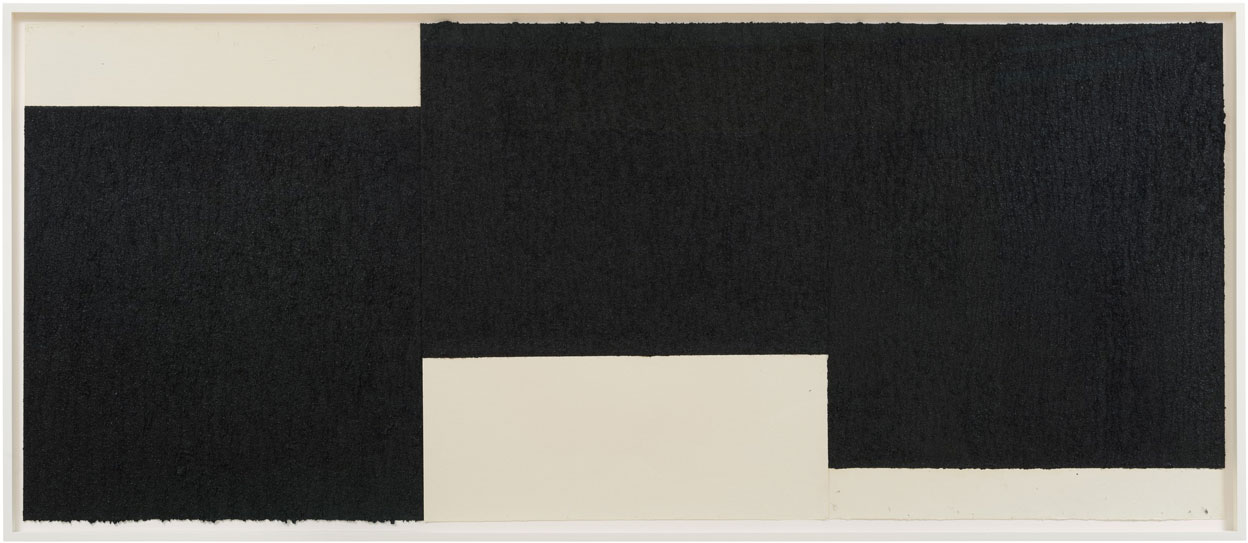ART CITIES:N.York-Richard Serra

One of the preeminent sculptors of our era, Richard Serra, has long been acclaimed for his challenging and innovative work, which emphasizes materiality and an engagement between the viewer, the site, and the work. In the early ‘60s, Serra and the Minimalist artists of his generation turned to unconventional, industrial materials and began to accentuate the physical properties of their art.
By Dimitris Lempesis
Photo: Gagosian Archive
Recent sculptures and drawings by Richard Serra are on presentation at 3 spaces of Gagosian Gallery in New York. In “Triptychs and Diptychs” at 980 Madison Avenue, a series of new diptych and triptych drawings are on view. In “Forged Rounds”, 4 new works from Serra’s “Rounds” series fills the entire West 24th Street gallery. Each forged-steel sculpture is composed of multiple 50-ton elements of differing diameters and heights. Bisecting the West 21st Street gallery space is on show “Reverse Curve” (2005/19), a sculpture measuring 99 feet long and 13 feet high. Originally conceived in 2005 for a public project in Reggio Emilia, Italy, “Reverse Curve” is finally being realized for the first time. Richard Serra was born in 1938 in San Francisco. While working in steel mills to support himself, Serra attended the University of California at Berkeley and Santa Barbara from 1957 to 1961, receiving a BA in English literature. He then studied as a painter at Yale University, New Haven, from 1961 to 1964, completing his BFA and MFA there. While at Yale, Serra worked with Josef Albers on his book “The Interaction of Color” (1963). During the early 1960s, he came into contact with Philip Guston, Robert Rauschenberg, Ad Reinhardt, and Frank Stella. In 1964 and 1965 Serra received a Yale Traveling Fellowship and traveled to Paris, where he frequently visited the reconstruction of Constantin Brancusi’s studio at the Musée National d’Art Moderne. He spent much of the following year in Florence on a Fulbright grant and traveled throughout southern Europe and northern Africa. The young artist was given his first solo exhibition at Galleria La Salita, Rome, in 1966. Later that year, he moved to New York where his circle of friends included Carl Andre, Walter De Maria, Eva Hesse, Sol LeWitt, and Robert Smithson. In 1966 Serra made his first sculptures out of nontraditional materials such as fiberglass and rubber. From 1968 to 1970 he executed a series of “Splash” pieces, in which molten lead was splashed or cast into the junctures between floor and wall. Serra had his first solo exhibition in the United States at the Leo Castelli Warehouse, New York. By 1969 he had begun the Prop pieces, whose parts are not welded together or otherwise attached but are balanced solely by forces of weight and gravity. That year, Serra was included in “Nine Young Artists: Theodoron Awards” at the Solomon R. Guggenheim Museum, New York. He produced the first of his numerous short films in 1968 and in the early 1970s experimented with video. The Pasadena Art Museum organized a solo exhibition of Serra’s work in 1970, and in the same year he received a John Simon Guggenheim Memorial Foundation fellowship. That year, he helped Smithson execute “Spiral Jetty” at the Great Salt Lake in Utah; Serra, however, was less intrigued by the vast American landscape than by urban sites, and in 1970 he installed a piece on a dead-end street in the Bronx. He received the Skowhegan Medal for Sculpture in 1975 and traveled to Spain to study Mozarabic architecture in 1982.
Info: Triptychs and Diptychs: Gagosian Gallery, 980 Madison Avenue, New York, Duration: 16/9-2/11/19, Days & Hours: Mon-Sat 10:00-18:00; Forged Rounds; Gagosian Gallery, 555 West 24th Street, New York, Duration: 17/9-17/12/19, Days & Hours: Mon-Sat 10:00-18:00; Reverse Curve: Gagosian Gallery, 522 West 21st Street, New York, Duration: 17/9/19-1/2/20, Days & Hours: Mon-Sat 10:00-18:00, https://gagosian.com



